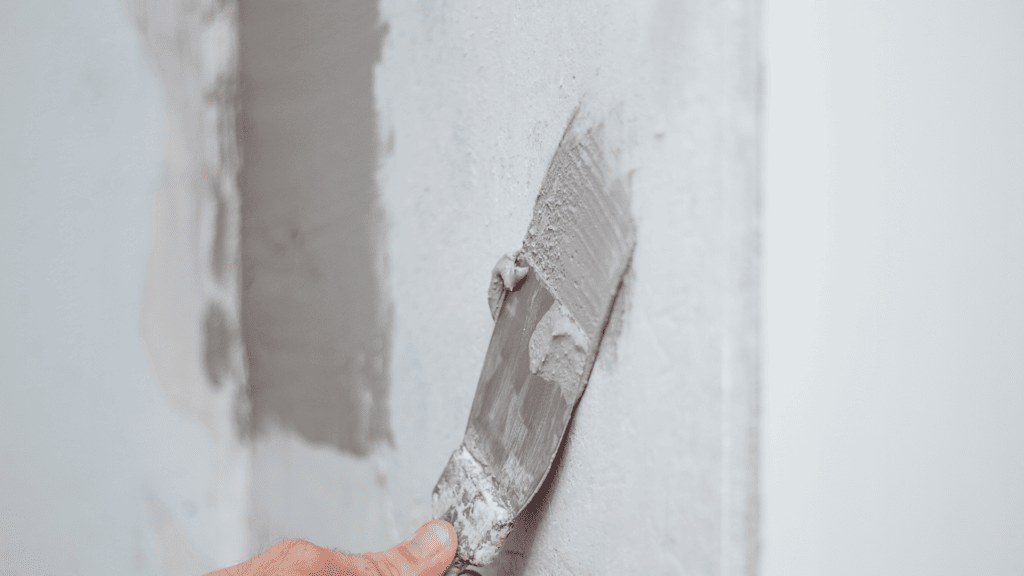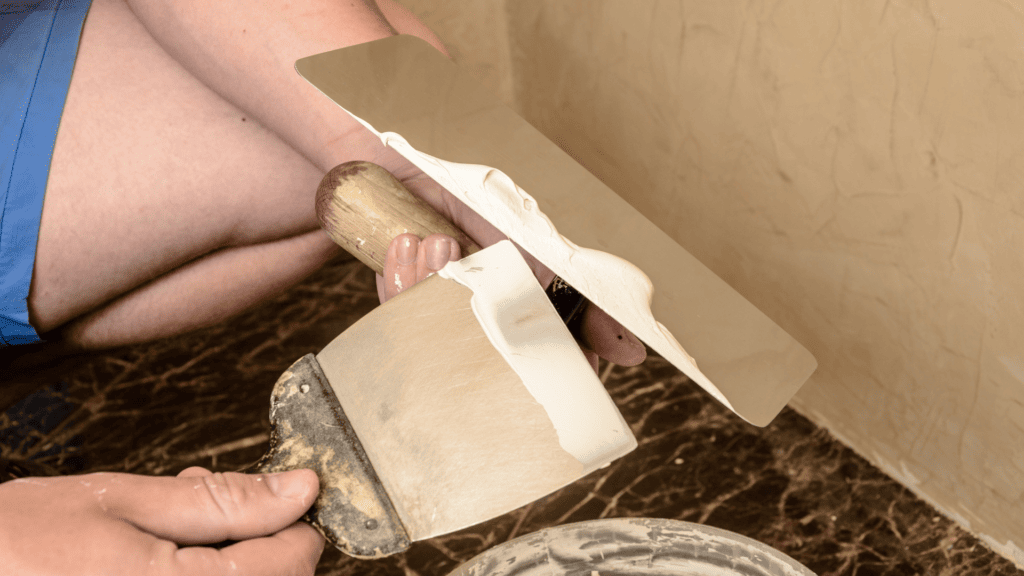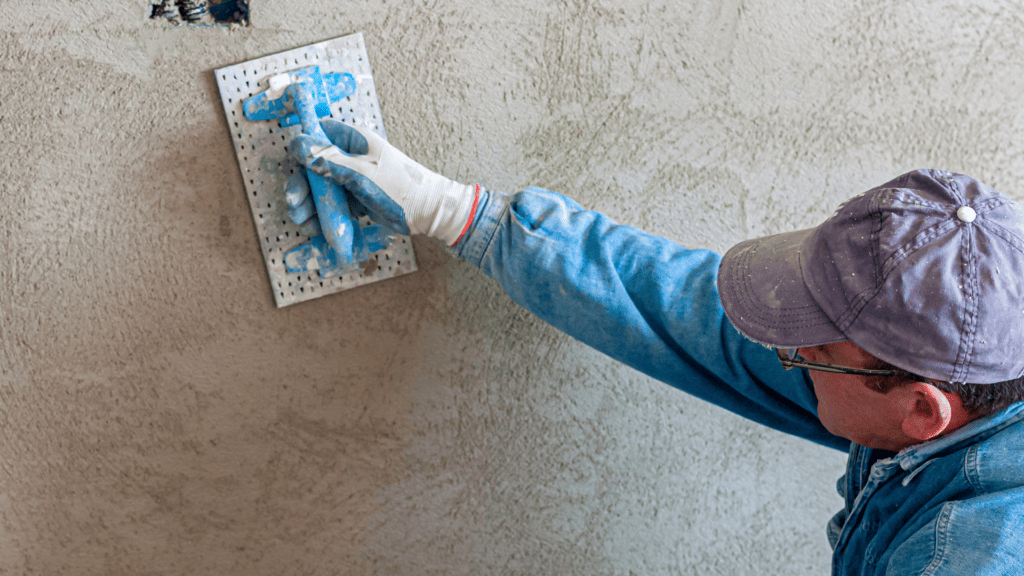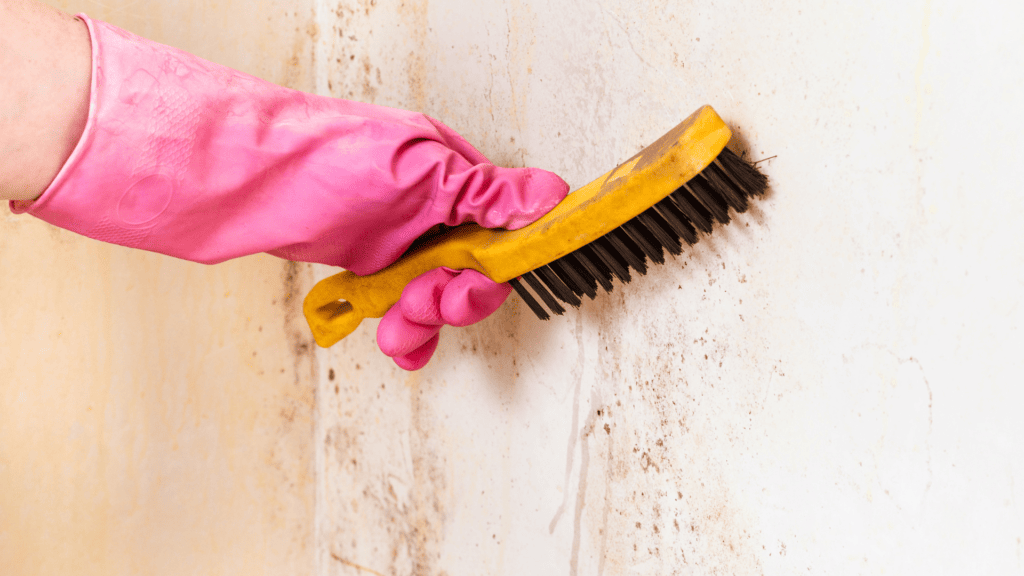Learn the secrets of Venetian plaster's enduring beauty and appreciate its classic elegance. Mastering the skill of maintaining Venetian plaster walls is crucial for keeping their beautiful finish intact and preventing damage over time. This article will use professional techniques to keep your walls looking great for years. Learn the tried-and-true methods the pros use to preserve the timeless beauty of Venetian plaster in your house or business. Explore the fascinating history of Venetian plaster and learn the secrets of keeping it looking beautiful for years to come.
Instructions for Using Venetian Plaster
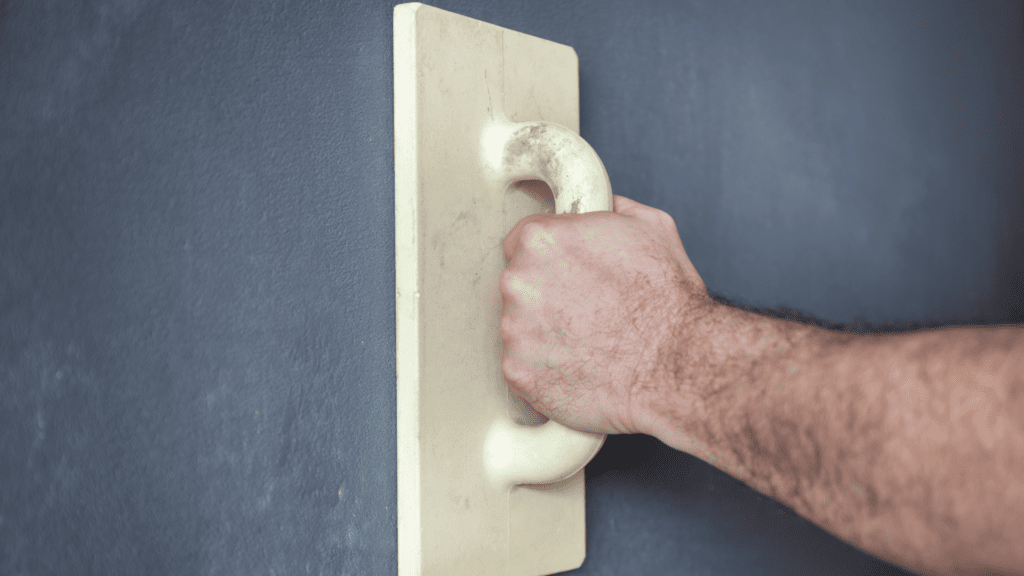
Want to save money while still accomplishing the look of natural stone? By consulting this guide, learn the steps to creating the look of age with homemade Venetian plaster.
Step 1
First, treat the area. Before applying handcrafted Venetian plaster, lay down drop cloths to prevent paint splash. Remove wall decor and mend holes. Spackled areas can be softly sanded with 100-grit sandpaper once the paste has dried according to the manufacturer's instructions.
Step 2
Sanding dust, dirt, debris, and oil may be washed away with 1 teaspoon of liquid dish soap per 4 cups of warm water in a bucket. Start by wiping the area with a rag dampened with soap solution, then rinse it off with water. After the paint is dry, tape off the floor, ceiling, and baseboards.
Step 3
After that, you must add colour to the joint compound to stand for the "plaster" in this Venetian plaster finish. Mix one teaspoon of latex colourant in a large bucket with 1 gallon of ready-to-use joint compound. Use the mixing attachment on a power drill to blend the colourant into the compound until it reaches pancake batter consistency. A latex colourant in a Mediterranean colour, such as lavender, terra cotta, or gold, will help you achieve a regal Italian-inspired style.
Step 4
Remember the mask, gloves, and safety glasses. Using an eight-inch drywall trowel, heap a tonne of a coloured joint compound onto a hawk. The joint compound should be spread in an eighth-inch coat using short, curving, x-shaped strokes at varying angles, with the trowel loaded with a bead the width of a hot dog from the hawk. The joint compound should be spread uniformly, beginning in the upper left. Wet the trowel edge every so often to get rid of the dried compound. Once the joint compound has dried for 24 hours, gently sand it with 60-80 grit paper. Movement in a circle flattens bumps in the material. Sand the wall, wipe it down with a damp rag and let it dry.
Step 5
Apply a pre-tinted finish to the surface's highlights with a paintbrush to emphasise the joint compound's colour contrasts. Apply the coat in an x-pattern-like joint compound. Choose a glaze hue deeper than the joint compound coat to mimic the actual marble's vivid and dark tones. Limestone's low-contrast appearance is achieved with a darker glaze than the joint compound layer. After the glaze dries, the contrast will be amazing.
Step 6
Applying a single coat of a clear water-based sealer with a roller will protect the texture of your Venetian plaster finish. Select a satin or semi-gloss sheen sealant if you want your marble to look polished. Select a matte sealant to achieve the limestone appearance. Once the sealant has dried, you may remove the painter's tape and expose your newly renovated wall or ceiling.
Is It Difficult to Maintain Venetian Plaster?
Traditional and elegant, Venetian plaster has been used for generations as an interior wall treatment. Venetian plaster is notoriously tough to maintain, but it's rather simple to clean with the right approach. Proper upkeep and avoiding abrasive cleaners or sponges are the two most important things to remember when cleaning Venetian plaster.
Dust and grime can be removed from your Venetian Plaster wall with a soft cloth wet in warm water and mild soap. It would help if you didn't have to worry about any damage to your wall's surface from this dust and dirt removal method. However, if you need to remove more entrenched stains, such as grease or food splatters, a light detergent can be used instead of soap.
Because of its distinctive texture, achieved by combining lime putty with marble dust or crushed stone, Venetian plaster should only be cleaned with a little abrasive. Use very mild pressure while washing your walls by hand, and avoid using an abrasive sponge that could scratch the surface over time.
Restoration companies that focus on restoring damaged surfaces, like Venetian Plaster, can be called in for help if all else fails. Depending on the severity of the damage, they may use specialised techniques like sandblasting or chemical treatments.
Typically costly, these techniques will restore your precious home accent to like-new condition without damaging its fragile makeup. Overall, maintaining Venetian Plaster may appear daunting at first. Still, after you learn how simple it is to properly care for these magnificent features and discover which cleaners are safe and efficient, you will find that keeping up with their upkeep is a breeze!
How Should I Care for Venetian Plaster?
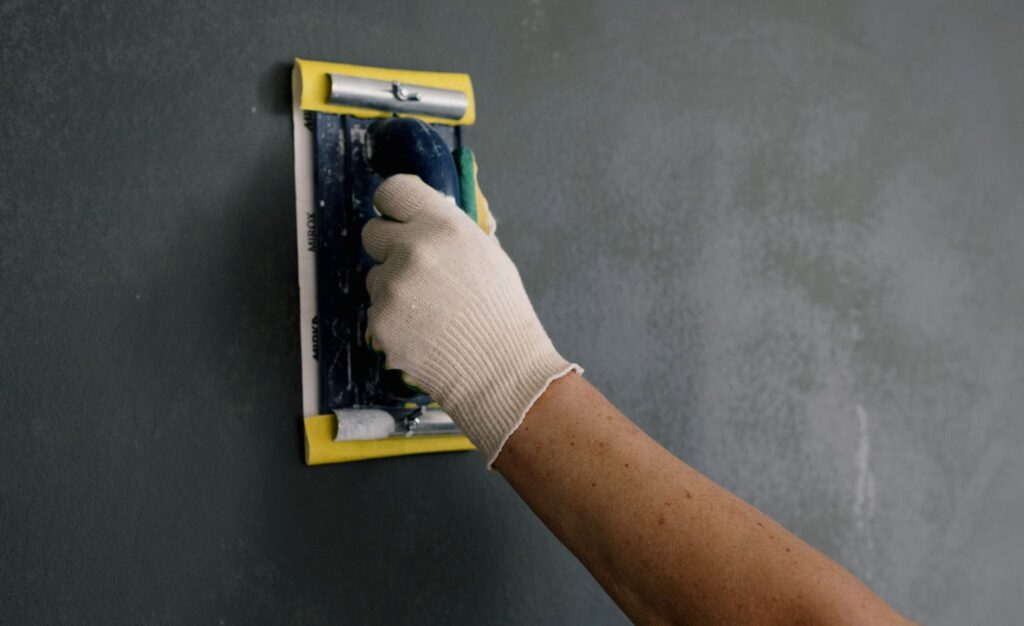
If you want to keep your Venetian polished plaster walls looking great, follow these five simple rules:
Verify The End Result.
Plasterers in Venice often use a specific wax to seal the finished product. This not only makes them impervious to water but also to oil and filth. Polished plaster walls are significantly easier to maintain regularly.
You should first see if a wax seal has been put on your Venetian-plastered walls before you begin cleaning them. Your polished plaster expert can give you guidance on this matter.
Your plaster should be easy to clean if it has been sealed. If it still needs to, or if it's been a while since the protective wax coating was put in, test a small area first. Before further action, you should discuss your dissatisfaction with a Venetian plaster professional.
Clean Gently
Polished plaster should only be cleaned with water or mild soap. When washing the marble-like surface, never use anything abrasive.
There may be times when stain removal is necessary. Keep in mind that polished plaster, despite its durability, is somewhat fragile. This is why it's important to take care when cleaning. A cotton towel is preferable for wet wiping, while a microfiber cloth works well for dusting. The shine of the finish can be brought back using either method.
Use The Proper Cleaning Methods.
When picking cleaning cloths and supplies, try to avoid using anything abrasive. The polished surface could be damaged by anything abrasive.
Hot water and a drop or two of mild soap (one that doesn't include bleach) on a washcloth can do the trick. When cleaning the walls, begin at a corner and move clockwise. This will eliminate the vast majority of the grime. For tougher stains, use a bleach-free wipe and rub gently.
Dry Thoroughly
Although Venetian plaster is watertight, the surface is not recommended to be left damp for any time. Once the dust and grime have been removed, wipe the wall down with a dry, soft, nonabrasive cloth. Again, go easy and circular. This will aid in bringing back the plaster's lustre.
Take your time and ensure no watermarks or smudges are left on the walls.
Take Caution When Making Fixes.
Even though polished Venetian plaster is extremely sturdy, it is nonetheless susceptible to damage from normal wear and tear. The good news is that it is simple to fix when polished plaster is laid in layers. This makes restoring the wall's smooth appearance easy, eliminating the need to replaster the entire surface.
How Long Does Venetian Plaster Last?
Walls covered in Venetian plaster are a popular option because of the material's distinctive beauty, resilience, and longevity. What about the durability of Venetian plaster? Several factors determine its lifespan, but it can last very long if cared for properly.
The lifetime of Venetian plaster is mostly determined by the quality of the materials used and the level of care given to it over time. If you use high-quality materials, install them correctly, and keep up with maintenance, your finish might last for twenty years or more. However, if you don't maintain it properly, it could break or fade and must be replaced before its time.
High-quality materials, such as lime putty and marble dust, are essential for a long-lasting Venetian Plaster installation. Ensure your applicator has prior expertise in these products to provide a uniform coating without any air pockets or inconsistent application that could compromise long-term efficacy. Plastered walls require regular upkeep to keep their pristine appearance for as long as possible.
Preventing wear and tear on your investment requires regular dusting and fast cleaning of any spillage. As a further precaution against water damage, which can lead to fading or discolouration if left untreated, the sealant should be applied every few years, at the absolute least.
UV protection coatings may be required for places exposed to direct sunlight, such as skylights/windowsills (ask your applicator about this option).
Conclusion
Maintaining Venetian plaster walls is crucial for preserving their timeless beauty and preventing damage over time. This article provides professional techniques to keep your walls looking great for years. Maintaining Venetian plaster is not difficult, but proper upkeep and avoiding abrasive cleaners or sponges are essential. Dust and grime can be removed with a soft cloth wet in warm water and mild soap, while a light detergent can be used for more entrenched stains.
Due to its distinctive texture, which combines lime putty with marble dust or crushed stone, Venetian plaster should only be cleaned with a little abrasive. Use very mild pressure while washing your walls by hand and avoid using an abrasive sponge that could scratch the surface over time. Venetian Plaster restoration companies can help restore damaged surfaces like Venetian Plaster using specialized techniques like sandblasting or chemical treatments.
The longevity of Venetian plaster depends on the quality of materials used and the level of care given over time. High-quality materials, such as lime putty and marble dust, are essential for a long-lasting finish. Regular upkeep is necessary to maintain its pristine appearance. Preventing wear and tear requires dusting, fast cleaning, and applying sealant every few years. UV protection coatings may be required for areas exposed to direct sunlight.
Content Summary
- Learn the secrets of maintaining Venetian plaster walls for enduring beauty.
- Master professional techniques to preserve the timeless elegance of Venetian plaster.
- Follow step-by-step instructions for using homemade Venetian plaster.
- Prepare the area by laying drop cloths and removing wall decor before applying the plaster.
- Clean the surface with a soap solution and tape off the floor, ceiling, and baseboards.
- Add color to the joint compound to achieve the Venetian plaster finish.
- Use an eight-inch drywall trowel to spread the joint compound evenly.
- Sand the dried joint compound to flatten bumps and imperfections.
- Apply a pre-tinted finish with a paintbrush to highlight the color contrasts.
- Seal the Venetian plaster with a water-based sealer for protection and shine.
- Venetian plaster is tough to maintain but simple to clean with proper care.
- Remove dust and grime with a soft cloth and mild soap.
- Use a little abrasive while washing the walls and avoid using an abrasive sponge.
- Restoration companies can be called for specialized treatments in case of damage.
- Verify if a wax seal has been applied to your Venetian plaster walls before cleaning.
- Clean gently with water or mild soap to preserve the plaster's shine.
- Avoid using anything abrasive that could damage the polished surface.
- Use a washcloth with mild soap and water to clean the walls effectively.
- Dry the walls thoroughly to bring back the plaster's luster.
- Take caution when making fixes to avoid damaging the plaster further.
- Venetian plaster can last for twenty years or more with proper care.
- The material's longevity depends on the quality of materials used and maintenance.
- High-quality materials like lime putty and marble dust are essential for longevity.
- Proper installation by an experienced applicator ensures uniform and consistent coating.
- Regular upkeep, dusting, and fast cleaning of spills prevent wear and tear.
- Apply sealant every few years for protection against water damage and fading.
- Consider UV protection coatings for areas exposed to direct sunlight.
- Venetian plaster adds a classic and elegant touch to interior walls.
- The article shares professional tips for maintaining Venetian plaster in homes and businesses.
- Homemade Venetian plaster can create the look of natural stone at a lower cost.
- Follow step-by-step instructions for preparing the area and applying the plaster.
- Choose the right colors and glazes to achieve the desired Italian-inspired style.
- Sand the dried joint compound carefully to achieve a smooth finish.
- Highlight the joint compound with a pre-tinted finish to mimic the appearance of real marble.
- Apply a water-based sealer to protect the Venetian plaster's texture.
- Cleaning Venetian plaster requires a gentle approach with non-abrasive materials.
- Restoring damaged surfaces like Venetian plaster may require specialized techniques.
- Proper care and maintenance can preserve the beauty of Venetian plaster.
- Venetian plaster is unique due to its distinctive texture achieved by combining lime putty with marble dust.
- The plaster's shine can be maintained with proper cleaning methods.
- Avoid leaving the surface damp after cleaning to prevent water damage.
- Fixing damaged areas in Venetian plaster is relatively easy due to its layered installation.
- The durability of Venetian plaster depends on materials, installation, and maintenance.
- High-quality materials and skilled applicators contribute to the plaster's longevity.
- Regular upkeep and sealing are essential for preserving the plaster's pristine appearance.
- Venetian plaster is a traditional and elegant choice for interior wall treatments.
- The wax seal on Venetian plaster makes it resistant to water, oil, and dirt.
- Cleaning should be done with care to avoid damaging the fragile plaster surface.
- Non-abrasive cloths and mild soap are recommended for cleaning Venetian plaster.
- Proper care and cleaning techniques make maintaining Venetian plaster easier.
Frequently Asked Questions About Venetian Plaster
Yes, Venetian plaster walls can be painted over if desired. However, painting over the plaster will change the texture and appearance of the surface.
Venetian plaster walls typically require minimal maintenance. Regular dusting and occasional cleaning should be sufficient to keep them looking their best.
Cracks can occur in Venetian plaster due to settlement or other factors. For small cracks, a professional can patch and repair the affected areas. Larger cracks may require more extensive repairs.
Venetian plaster walls can be installed in high-traffic areas but may be more prone to wear and damage. Consider using a protective wax or sealer to enhance durability in such areas.
To maintain the shine of Venetian plaster walls, periodically apply a high-quality wax or polish specifically designed for use on plaster surfaces. Follow the manufacturer's instructions for best results.

